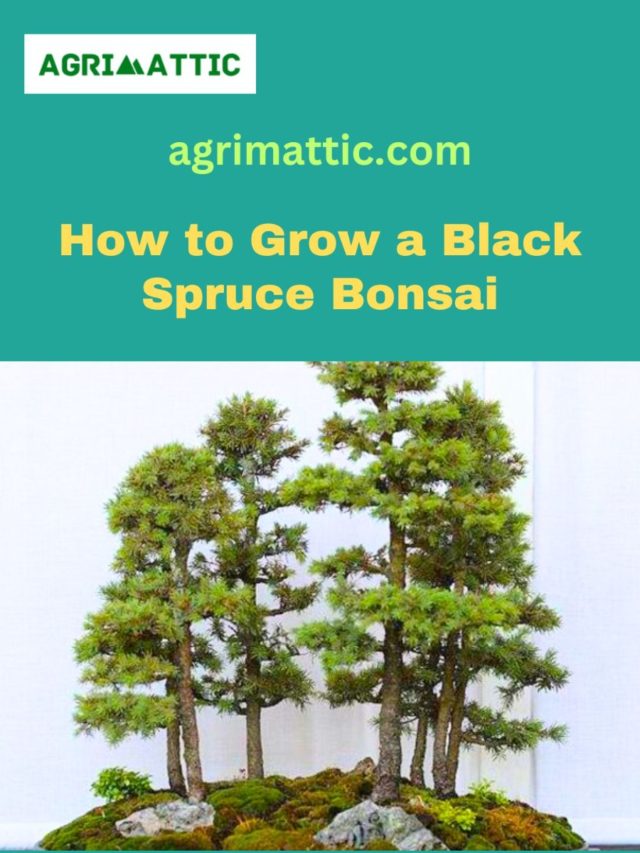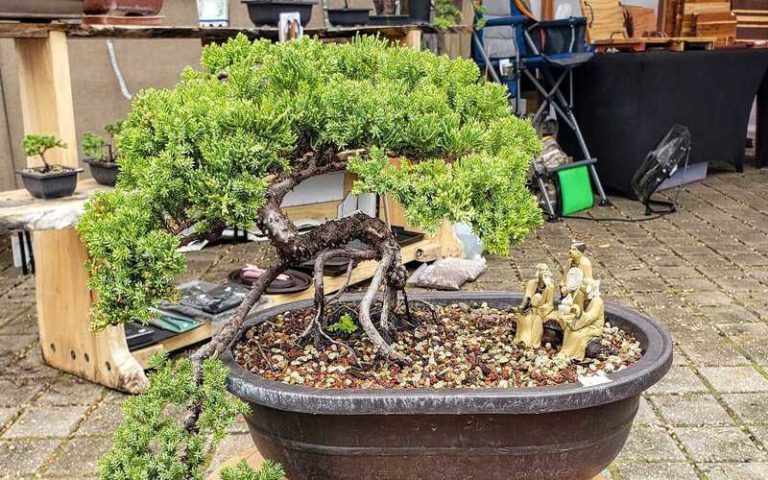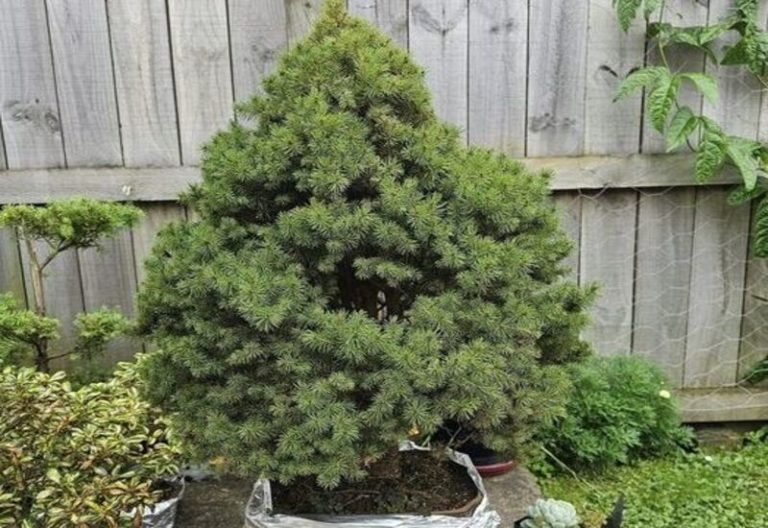Black Spruce Bonsai: The Ultimate Stress-Relieving Hobby for Nature Lovers
A black spruce bonsai is a tiny form of a black spruce tree that may be cultivated in a small pot. It is a popular option among bonsai aficionados owing to its attractive look and ease of upkeep.
Black spruce bonsai is a coniferous tree with a pyramidal form and sparse, green or bluish-gray-colored needles. In the wild, it can attain a height of up to 20 feet, but as a bonsai, it typically remains between 1 and 2 feet tall.
What is Black Spruce Bonsai?
Black spruce bonsai is a type of bonsai tree that is a small reproduction of the black spruce tree, a coniferous tree native to northern North America. The bonsai black spruce is grown in a small pot and is popular among bonsai lovers because to its appealing look and simplicity of care.
Growing and shaping black spruce bonsai requires proper care and techniques, but with the right conditions, it can thrive and provide a beautiful addition to any bonsai collection.
History and Origins of Black Spruce Bonsai
Black spruce bonsai is a type of bonsai tree that is a small reproduction of the black spruce tree, a coniferous tree native to northern North America. The bonsai black spruce is grown in a small pot and is popular among bonsai lovers because to its appealing look and simplicity of care.
In contrast, the black spruce tree is indigenous to frigid and damp climates in northern North America. It is a slow-growing tree that can survive up to 200 years and is an essential source of wood, pulpwood, and other materials.
The black spruce bonsai was most likely produced by bonsai aficionados who believed the black spruce tree was lovely and promising and opted to cultivate it in a tiny container. People learned how to grow and shape black spruce bonsai through time, and its resilience and distinct appearance made it a favorite option among bonsai enthusiasts.
If you’re looking to add a beautiful, low-maintenance tree to your bonsai collection, a black spruce is a great choice. They have since become commonplace in bonsai displays worldwide.
Types of Black Spruce Bonsai
There are many varieties of black spruce bonsai, each with its own unique features and look. Here are several of the most prevalent:
1. Dwarf black spruce bonsai: This type of black spruce bonsai is known for its compact size and slow growth rate. It has small, green needles and a dense, bushy appearance.
2. Grafted black spruce bonsai: Grafted black spruce bonsai are created by grafting a black spruce onto a different type of rootstock. This can result in a tree with unique characteristics and a more varied appearance.
3. Cascade black spruce bonsai: Cascade black spruce bonsai are trained to grow in a cascading or waterfall-like shape, with the trunk and branches hanging down from the pot.
4.Windswept black spruce bonsai: Windswept black spruce bonsai are trained to look as if they have been shaped by strong winds, with the branches and foliage growing in one direction.
5. Formal upright black spruce bonsai: Formal upright black spruce bonsai are trained to grow in a straight, upright manner with evenly spaced branches and foliage.
Whatever variety of black spruce bonsai you pick, it’s essential to offer adequate care and maintenance to keep it healthy and beautiful. This involves watering on a regular basis, fertilizing, trimming, and shaping as needed.
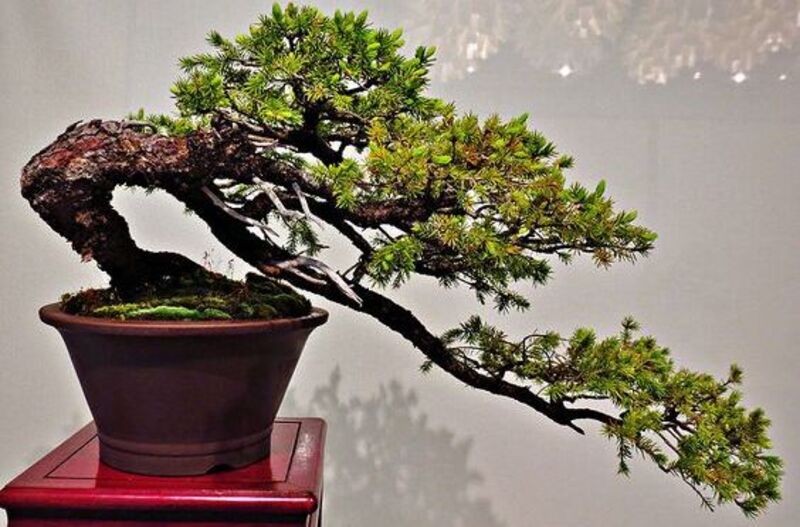
Black Spruce Bonsai and Its Symbolism
In Japanese culture, bonsai trees are often associated with symbolism and meaning. Black spruce bonsai, in particular, can hold several symbolic meanings depending on the context.
One popular connotation associated with black spruce bonsai is perseverance and strength. This is due to the tree’s capacity to live in difficult conditions with low temperatures and heavy winds. As slow-growing trees that may live for many years, black spruce bonsai can also represent longevity and endurance.
In some cultures, black spruce bonsai are associated with winter and the holiday season. This is due to their evergreen foliage, which remains green throughout the winter months. They can also symbolize hope and renewal, as they are a sign of life during the cold and dark winter season.
Overall, depending on the culture and setting in which they are perceived, the significance of black spruce bonsai might vary. However, they are frequently viewed as a symbol of perseverance, strength, longevity, and rebirth.
Characteristics of Black Spruce Bonsai
Bonsai devotees find black spruce bonsai to be distinctive and alluring due to its unique characteristics. The following are some of the most prominent characteristics of bonsai black spruce:
- Small size: The average height of a black spruce bonsai is about one to two feet, making it a wonderful option for individuals who need a little bonsai tree.
- Evergreen foliage: Black spruce bonsai have green or bluish-gray needles that remain on the tree year-round, giving it a beautiful and vibrant appearance.
- Slow growth: Black spruce bonsai develop slowly, allowing for greater control over their form and appearance. This also implies that it requires less frequent pruning than other bonsai tree varieties.
- Hardy: Hardy plants that can resist freezing temperatures and harsh weather conditions make black spruce bonsai an excellent choice for outdoor bonsai gardening.
- Attractive bark: The bark of black spruce bonsai is typically gray or brown in color and has an interesting texture that adds to its overall aesthetic appeal.
- Easy maintenance: Caring for a black spruce bonsai is simple and requires less attention compared to other varieties of bonsai.
Overall, black spruce bonsai is a lovely and distinct tree that is ideal for bonsai development. It may grow and make a lovely addition to any bonsai collection with appropriate care and upkeep.
How to Grow a Black Spruce Bonsai
Growing a black spruce bonsai may be a satisfying experience for bonsai aficionados. Here are some fundamental techniques for cultivating a healthy and appealing black spruce bonsai:
Choose the right soil: Black spruce bonsai prefers well-draining, mildly acidic soil conditions. You can use either a bonsai soil blend or a combination of peat moss, perlite, and grit.
Select the right container: Choose a container with drainage holes that is proportional to the size of your tree to prevent the soil from becoming inundated.
Water regularly: Black spruce bonsai requires consistent irrigation to maintain a moist, but not drenched, soil. When the upper soil stratum feels dry to the touch, water it.
Provide ample sunlight: The black spruce bonsai needs plenty of sunlight to grow and thrive. Place your bonsai in a location with plenty of direct sunlight, or provide artificial lighting if necessary.
Fertilize regularly: Black spruce bonsai requires regular fertilization to provide the necessary nutrients for healthy growth. Use a balanced fertilizer and follow the manufacturer’s instructions for application.
Prune and shape as needed: To obtain the desired appearance, black spruce bonsai can be shaped and pruned. Remove undesirable branches and foliage, and shape the tree as necessary using bonsai pruning tools.
Protect from extreme temperatures: Black spruce bonsai can withstand cold temperatures, but extreme heat or cold can damage the tree. Protect your bonsai from extreme temperatures by moving it indoors during extreme weather conditions.
By adhering to these easy steps, you can cultivate a beautiful and thriving black spruce bonsai that will bring you years of pride and enjoyment.
Benefits of Black Spruce Bonsai
Beyond its aesthetic appeal, black spruce bonsai provides a number of additional benefits. The following are some advantages of possessing a black spruce bonsai:
1. Stress relief: Caring for a black spruce bonsai can be a relaxing and meditative activity that can help reduce stress and anxiety.
2. Air purification: As with all plants, bonsai black spruce purifies the air by absorbing carbon dioxide and emitting oxygen.
3. Improved indoor air quality: Indoor air can be polluted with harmful chemicals, but black spruce bonsai can help improve indoor air quality by absorbing pollutants and toxins.
4. Aesthetic appeal: The natural elegance of black spruce bonsai enhances any indoor or outdoor space.
5. Educational opportunity: Growing and caring for a black spruce bonsai can be both entertaining and educational, particularly for children who can learn about plant maintenance and the natural world.
6. Longevity: A properly cared-for black spruce bonsai can survive for decades, making it a durable and rewarding addition to any bonsai collection.
Overall, black spruce bonsai offers several benefits beyond its aesthetic appeal, including stress relief, air purification, and educational opportunities. By growing and caring for a black spruce bonsai, you can enjoy these benefits and enhance the natural beauty of your living space.
Styling and Design of Black Spruce Bonsai
The styling and design of a black spruce bonsai can be an enjoyable and creative process. Here are some tips for styling and designing your black spruce bonsai:
Choose a style: Bonsai styles include formal upright, informal upright, slanting, cascading, and semi-cascade. Consider the tree’s shape and structure when choosing a design.
Prune and shape: Utilize bonsai pruning tools to remove unwanted branches and foliage, as well as to shape the tree into the desired shape. Remember that black spruce bonsai grows slowly, so avoid excessive pruning and be patient.
Wire the branches: Utilize bonsai pruning tools to remove superfluous branches and foliage, and to shape the tree into the desired form. Remember that black spruce bonsai grows slowly, so be patient and avoid excessive pruning.
Consider the trunk: The trunk of your black spruce bonsai can be a focal point of its design. Consider using jin (deadwood) techniques to create an interesting and unique texture on the trunk.
Use accent plants: Adding accent plants, such as moss or small flowering plants, can enhance the overall design of your black spruce bonsai.
Balance the design: Bonsai design relies heavily on equilibrium. Consider the overall form and structure of your tree, and make adjustments as necessary to achieve a balanced and harmonious design.
You can decorate and design your black spruce bonsai to create a gorgeous and unique addition to your bonsai collection by following these tips. Be patient and take pleasure in the process of growing and caring for your bonsai.
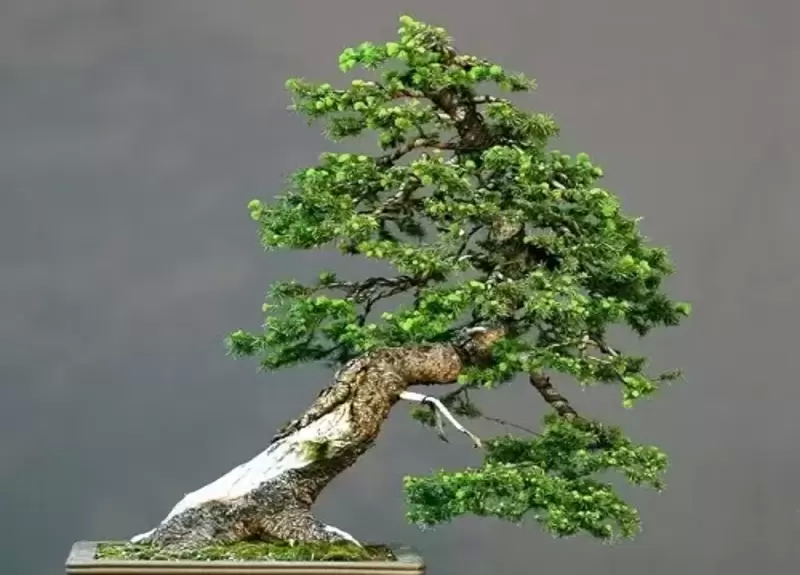
How to Care for and Maintain Black Spruce Bonsai
Caring for a black spruce bonsai is essential to keeping it healthy and beautiful. Here are some tips for caring for and maintaining your black spruce bonsai:
- Watering: Regularly water your black spruce bonsai, but avoid overwatering. The soil should be dewy, but not saturated with water. Depending on the environment and the season, watering requirements may vary.
- Fertilizing: Use a balanced fertilizer during the growing season to provide essential nutrients for your bonsai. Follow the recommended dosage on the package.
- Repotting: Repot your black spruce bonsai every 2-3 years to refresh the soil and promote healthy growth. The best time to repot is in the early spring, before new growth appears.
- Pruning: Prune your black spruce bonsai regularly to maintain its shape and promote healthy growth. Prune in the early spring before new growth appears.
- Pest and disease control: Monitor your black spruce bonsai regularly for pests and diseases. Treat any issues promptly to prevent damage to the tree.
- Light and temperature: Black spruce bonsai prefers cool, humid environments with partial shade. Avoid placing your bonsai in direct sunlight or extreme temperatures.
- Wiring: If you have wired your bonsai, monitor the wires regularly and remove them as soon as the branches have set in the desired shape.
By adhering to these care and maintenance guidelines, you can keep your black spruce bonsai healthy and attractive for years to come. Remember to give it the proper environment, water, nutrients, and care to promote healthy growth and preserve its attractiveness.
Black Spruce Bonsai care sheet
| Aspect | Care Tips |
| Watering | Water regularly, but avoid overwatering. Soil should be moist but not waterlogged. Water needs may vary based on season. |
| Fertilizing | Use balanced fertilizer during growing season. Follow recommended dosage on package. |
| Repotting | Repot every 2-3 years in early spring before new growth appears. |
| Pruning | Regularly prune to maintain shape and promote healthy growth. Prune in early spring before new growth appears. |
| Pest and disease control | Monitor regularly for pests and diseases. Treat promptly to prevent damage to the tree. |
| Light and temperature | Prefer cool, humid environments with partial shade. Avoid direct sunlight or extreme temperatures. |
| Wiring | Monitor wires regularly and remove them as soon as the branches have set in the desired shape. |
These care tips are brief and general in nature. It’s important to research and understand the specific care needs of your black spruce bonsai based on its individual characteristics and environment.
Conclusion
Black spruce bonsai is a beautiful and easy-to-care-for tree that can be enjoyed by both beginners and experienced bonsai enthusiasts. By providing the proper growing conditions, shaping, and care, you can create a stunning miniature version of this majestic tree.
FAQ:
Q: What is black spruce bonsai?
Answer: Black spruce bonsai is a small tree grown in a container through pruning and cultivation.
Q: What are the benefits of growing black spruce bonsai?
Answer: Growing black spruce bonsai can reduce stress, improve focus, and develop patience.
Q: How long does it take for a black spruce bonsai to grow?
Answer: The growth rate varies, but it generally takes several years for a black spruce bonsai to mature.
Q: What are the different types of black spruce bonsai?
Answer: There are several varieties, including dwarf black spruce, Alberta spruce, and Picea mariana.
Q: How often should I water my black spruce bonsai?
Answer: Watering frequency depends on factors such as the size of the container and the climate. As a general rule, water your bonsai when the soil surface begins to feel dry.
Q: How often should I fertilize my black spruce bonsai?
Answer: Fertilizing frequency depends on the type of fertilizer used. In general, fertilize your black spruce bonsai every 4-6 weeks during the growing season.
Q: When should I repot my black spruce bonsai?
Answer: Repot your black spruce bonsai every 2-3 years, or when the roots begin to outgrow the container.
Q: How should I prune my black spruce bonsai?
Answer: Prune your black spruce bonsai in the late winter or early spring before new growth appears. Use sharp, clean tools and remove any dead, damaged, or unwanted branches.
Q: How do I control pests and diseases on my black spruce bonsai?
Answer: Monitor your bonsai regularly for signs of pests or diseases. Treat any issues promptly with appropriate methods, such as insecticidal soap or horticultural oil for pests, or fungicides for fungal diseases.
Q: What kind of light and temperature does my black spruce bonsai need?
Answer: Black spruce bonsai prefers full sun to partial shade and cool temperatures, ideally between 40-60°F (4-15°C).
Also Read:


